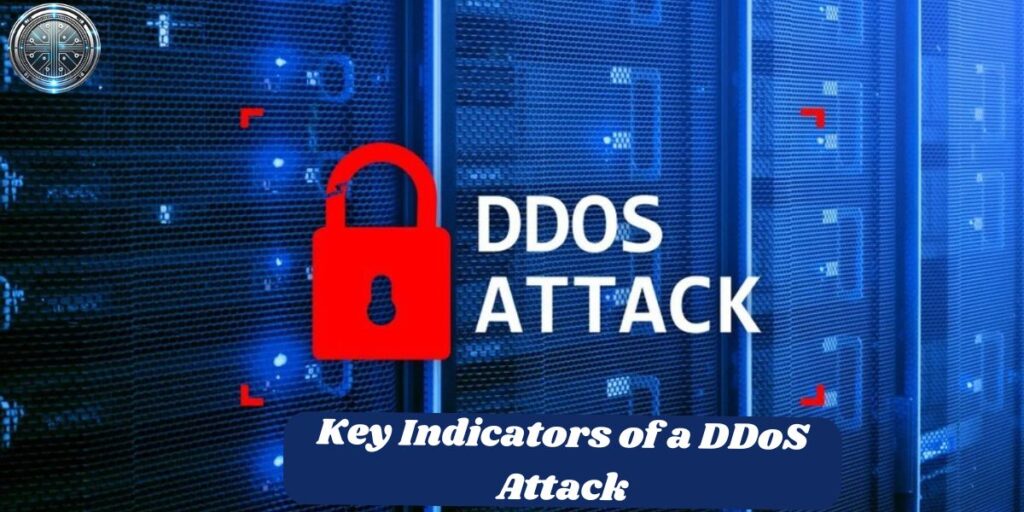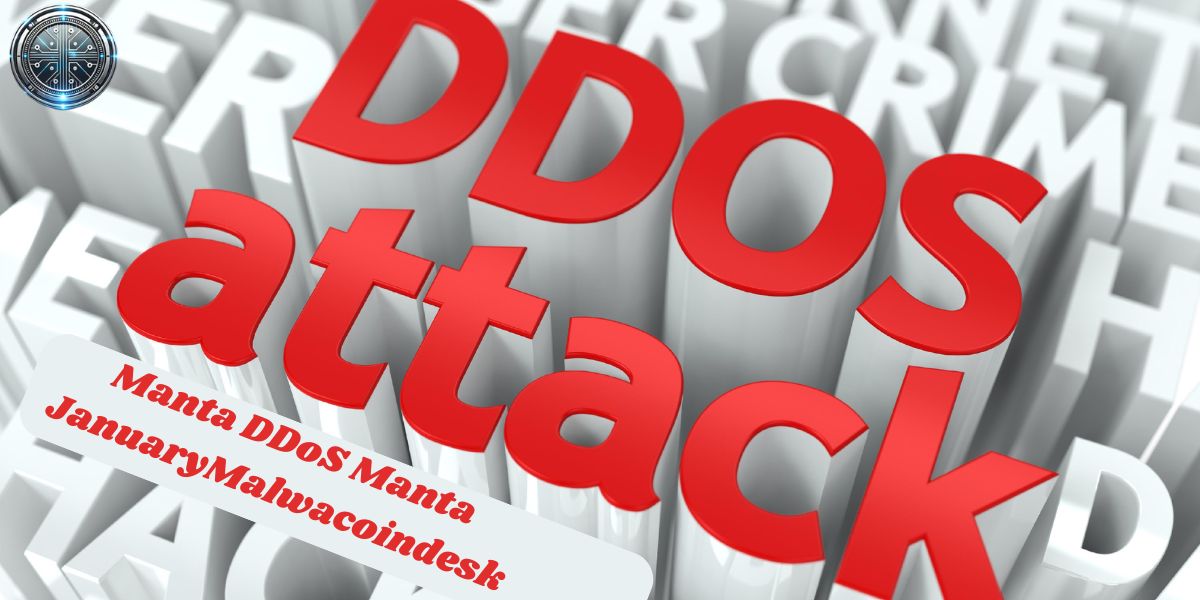The frequency and sophistication of Distributed Denial-of-Service (DDoS) attacks have steadily increased, posing significant challenges for organizations across industries. These attacks are designed to overload systems, causing disruptions, financial losses, and reputational harm. now we will explore in this article DDoS Manta JanuaryMalwacoindesk.
For cryptocurrency platforms, the threat is even more pronounced. Blockchain ecosystems operate in a decentralized and public environment, making them highly attractive to cybercriminals. Attacks targeting these platforms not only disrupt services but also undermine trust, which is the backbone of blockchain technology.
In recent years, DDoS attacks have highlighted vulnerabilities in even the most secure platforms. This article examines the Manta DDoS Manta JanuaryMalwacoindesk incident and explores how crypto platforms can mitigate similar threats.
What Is a DDoS Attack?
A DDoS attack occurs when a network, server, or service is flooded with an overwhelming amount of traffic. The goal is to make the system unavailable to legitimate users by exhausting its resources, such as bandwidth, memory, or processing power.
Unlike traditional attacks, DDoS attacks are executed using botnets—networks of compromised devices controlled by hackers. These devices, often spread across the globe, launch coordinated attacks, making it difficult to trace the source.
DDoS attacks vary in type, including volumetric attacks (flooding bandwidth), protocol attacks (targeting server resources), and application-layer attacks (disrupting specific services). All are disruptive and require robust countermeasures.
The Impact of DDoS Attacks
The consequences of DDoS attacks are far-reaching. Beyond immediate service outages, they create long-term damage for businesses. Revenue losses from downtime, coupled with the costs of mitigating the attack, can be substantial.
In the blockchain ecosystem, these attacks can disrupt trading platforms, freeze transactions, and hinder token launches. Such interruptions affect millions of users, creating distrust in the system. Furthermore, attackers often use DDoS as a diversion, exploiting the chaos to infiltrate systems and steal sensitive data.
Why Crypto Platforms Are Targets
Crypto platforms are lucrative targets for DDoS attacks due to their valuable digital assets and constant accessibility. Many blockchain systems rely on public networks, making them vulnerable to external threats.
Attackers exploit weak points such as poorly configured nodes, public APIs, or insufficient traffic monitoring. Moreover, the lack of global regulation in the crypto industry makes it easier for attackers to act with impunity, knowing that victims have limited avenues for recourse.
Understanding the Manta DDoS Manta JanuaryMalwacoindesk Incident
What Happened During the Manta DDoS Attack?
In January, Manta Network—a privacy-focused blockchain platform—suffered a coordinated DDoS attack. The attackers flooded the network with artificial traffic, overwhelming its infrastructure and rendering services unavailable.
The incident exposed vulnerabilities in Manta’s decentralized design, leading to delayed transactions and degraded network performance. The attack’s scale highlighted the challenges even advanced blockchain platforms face in mitigating such threats.
Key Indicators of a DDoS Attack

Common signs of a DDoS attack include:
- Unusual traffic spikes from unknown or suspicious sources.
- Service slowdowns or unresponsiveness.
- Frequent connection errors or dropped requests.
- Overloaded servers struggling to handle requests.
Detecting these indicators early allows organizations to implement countermeasures, such as blocking suspicious IPs or rerouting traffic.
The Connection Between DDoS and Januarymalwacoindesk
The Januarymalwacoindesk incident demonstrated how DDoS attacks can disrupt even well-prepared blockchain platforms. It revealed the importance of integrating advanced traffic management tools into decentralized systems.
This attack underscored the need for collaboration among blockchain developers, security firms, and users to create a more resilient infrastructure capable of withstanding cyber threats.
Read more: Discover Harmonicode Games Innovation Meets Entertainment
Manta Network: A Blockchain Privacy Pioneer
Key Features of Manta Network
Manta Network stands out as a privacy-centric blockchain platform. It leverages zk-SNARKs (zero-knowledge proofs) to enable anonymous transactions, ensuring user data and transaction details remain confidential.
Additionally, Manta supports decentralized applications (dApps) while prioritizing user privacy, making it an innovative leader in the blockchain space.
How Manta Network Addresses DDoS Threats
Real-Time Monitoring: Manta has implemented advanced monitoring tools to detect abnormal traffic patterns. This allows the network to identify and block malicious activity before it escalates.
Decentralized Traffic Management: By spreading traffic across multiple nodes, Manta reduces the impact of localized attacks, ensuring continuous service availability.
Community Collaboration: Manta actively involves its community in reporting vulnerabilities and sharing threat intelligence, creating a unified defense mechanism against cyberattacks.
Impact of DDoS Attacks on Blockchain Platforms
Service Disruptions
DDoS attacks disrupt the functionality of blockchain platforms, causing transaction delays and outages. For users, this can mean missing trading opportunities or losing confidence in the platform’s reliability.
Financial Losses
The financial toll of a DDoS attack includes lost revenue during downtime, remediation costs, and potential legal fees. For crypto platforms, halted services during high-traffic periods can result in millions of dollars in losses.
Data Vulnerabilities
While the primary goal of DDoS attacks is disruption, they often serve as a distraction for more insidious activities, such as data breaches or system infiltration. This makes them doubly dangerous for blockchain platforms.
Preventative Measures for DDoS Attacks
Strengthening Technological Infrastructure
Organizations must invest in scalable server infrastructure, robust firewalls, and automated traffic filtering tools to handle the surge of malicious traffic.
Educating the Community
User awareness is crucial. Educating stakeholders about common attack vectors and best practices, such as avoiding phishing schemes and securing private keys, builds a stronger defense.
Collaborate with Other Organizations
Partnerships with ISPs, cybersecurity firms, and other blockchain platforms enable better threat intelligence sharing and coordinated responses to attacks.
Practical Steps to Mitigate DDoS Attacks
- Use a Content Delivery Network (CDN): CDNs distribute traffic across multiple servers, reducing the strain on a single node.
- Implement Rate Limiting and Traffic Filtering: These tools prevent excessive requests from overwhelming the system.
- Leverage DDoS Protection Services: Companies like Cloudflare or AWS Shield provide specialized mitigation services.
- Enhance Infrastructure Redundancy: Redundant systems ensure operations continue even during an attack.
- Monitoring and Incident Response Planning: Proactive monitoring and a clear response plan minimize damage and downtime.
Response Plan: What to Do During a DDoS Attack
Monitor Traffic Patterns Continuously
Continuous traffic analysis helps identify the scale and origin of the attack, enabling a faster response.
Use Rate Limiting and Geo-blocking
Blocking traffic from specific regions or IP ranges is a simple but effective way to mitigate ongoing attacks.
Work with Your ISP and Security Partners
Engaging your ISP and cybersecurity providers ensures access to advanced tools and expertise for dealing with sophisticated attacks.
The Role of January in Cybersecurity Trends
Origins of Januarymalwacoindesk
The Januarymalwacoindesk incident brought global attention to vulnerabilities in blockchain systems, particularly during high-traffic events like token launches.
Why Januarymalwacoindesk Matters for Blockchain Security
This event highlighted the critical need for robust cybersecurity in the blockchain space, serving as a warning for platforms to prioritize resilience and user protection.
Read more: Remote AnyDeskAbramsBleepingComputer
Key Takeaways from the Manta DDoS Attack
The Manta attack emphasized the importance of proactive security measures, decentralized traffic management, and community collaboration in mitigating cyber threats.
The Future of Blockchain Security
A Call to Action
The blockchain industry must continue evolving its security protocols, fostering collaboration, and investing in advanced technologies to counter the growing threat of DDoS attacks. The future of decentralized finance depends on it.
Conclusion
The Manta DDoS Manta JanuaryMalwacoindesk incident underscores the increasing sophistication of cyber threats targeting blockchain platforms. DDoS attacks pose a significant risk to service reliability, financial stability, and user trust in decentralized systems. Platforms must prioritize robust infrastructure, real-time monitoring, and community collaboration to combat these evolving threats effectively.
Moving forward, the blockchain industry must take a proactive stance by adopting comprehensive security measures and fostering partnerships to strengthen its defense against DDoS attacks. By investing in resilience and education, platforms can safeguard their operations, protect users, and build a secure foundation for the future of decentralized finance.
FAQ’s
What is the primary goal of a DDoS attack?
The primary goal of a DDoS attack is to overwhelm a system, server, or network, making it inaccessible to legitimate users. This disruption can lead to downtime, financial loss, and reputational damage.
Can individuals protect their devices from being part of a botnet?
Yes, individuals can protect their devices by keeping software updated, using strong passwords, and avoiding suspicious downloads or links. Installing reputable antivirus software also helps prevent infections.
Why are decentralized platforms more vulnerable to cyberattacks?
Decentralized platforms rely on public networks and transparent protocols, which expose more points of entry for attackers. The lack of centralized control can make coordinated defenses more challenging.
How do attackers benefit financially from DDoS attacks?
Attackers may demand ransom payments to stop an ongoing attack or use the disruption as a diversion for data theft or market manipulation. They also exploit downtime to damage competitors or target user confidence.
Are there legal consequences for launching a DDoS attack?
Yes, DDoS attacks are illegal in most jurisdictions and are considered cybercrimes. Perpetrators can face significant penalties, including fines and imprisonment, if caught.











